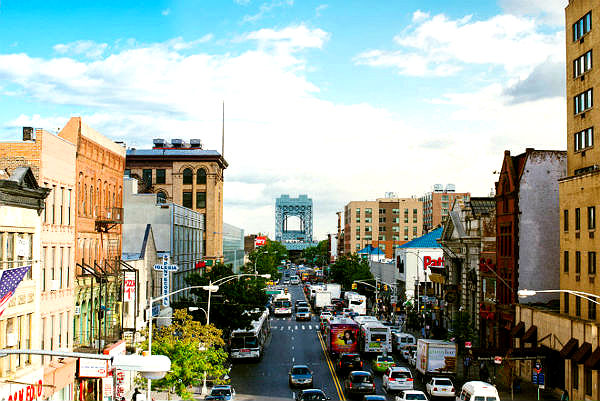 The Health Department’s Center for Health Equity today released “Block by Block: Walking for a Healthier East Harlem,” a report on walking in East Harlem based on a survey of over 200 residents and street assessments of more than 20 blocks.Key findings show most people in the neighborhood walk for at least 10 minutes a day and want to continue to do so, and that people are primarily concerned about safety, lighting, and cleanliness. Residents also responded positively to the East Harlem Community Walking Trail and existing community resources to promote walking, such as public art, parks, and trees. The Block by Block report was a collaborative effort between the East Harlem Community Walking Trail and existing community resources to promote walking, such as public art, parks, and trees. The Block by Block report was a collaborative effort between the East Harlem community and other City agencies, including the Department of City Planning, Mayor’s Office of Criminal Justice, and the Department of Transportation. It will be used as an educational tool for residents, community-based organizations and policymakers to increase walking and walkability in East Harlem.
The Health Department’s Center for Health Equity today released “Block by Block: Walking for a Healthier East Harlem,” a report on walking in East Harlem based on a survey of over 200 residents and street assessments of more than 20 blocks.Key findings show most people in the neighborhood walk for at least 10 minutes a day and want to continue to do so, and that people are primarily concerned about safety, lighting, and cleanliness. Residents also responded positively to the East Harlem Community Walking Trail and existing community resources to promote walking, such as public art, parks, and trees. The Block by Block report was a collaborative effort between the East Harlem Community Walking Trail and existing community resources to promote walking, such as public art, parks, and trees. The Block by Block report was a collaborative effort between the East Harlem community and other City agencies, including the Department of City Planning, Mayor’s Office of Criminal Justice, and the Department of Transportation. It will be used as an educational tool for residents, community-based organizations and policymakers to increase walking and walkability in East Harlem.
The Block by Block report was revealed today at the third annual Walk-a-Thon hosted by the Harlem Health Advocacy Partners (HHAP) program. HHAP is a community health worker program that connects people living in five NYCHA developments in East and Central Harlem to neighborhood resources to help them manage their health conditions, enroll and save on health insurance, and get involved with community organizing. HHAP has engaged more than 3,000 individuals in over 600 wellness activities – including walking groups. To read stories about HHAP participants and community health workers, follow the #NeighborhoodVoicesNYC series on the Health Department’s social media channels.
“Having a safe, walkable community space provides people with the opportunity to be physically active and live healthier lives. Walking reduces the risk of diabetes, heart disease, and obesity, and it helps people manage stress and anxiety,” said Acting Health Commissioner Dr. Oxiris Barbot. “The Block by Block report makes it clear that East Harlem residents want to be active in their neighborhood and connect with each other. We are committed to working with other City agencies and community-based organizations on making walking more accessible for the East Harlem community.”
“Walking is an easy and great way to improve our health, but not everyone has equitable access to safe and clean spaces,” said Dr. Aletha Maybank, Deputy Commissioner and Director of the Center for Health Equity. “The results from this survey show us that people want to walk. Together we can work to improve the East Harlem environment so that everybody has access to walking and can thrive.”
Walking is a great form of exercise that can prevent many of the diseases East Harlem residents are already disproportionately susceptible to – including diabetes, obesity, and high blood pressure, said Council Member Diana Ayala. “This survey demonstrates that East Harlem is dedicated to working collaboratively to combat health inequity. I look forward to working alongside my community to promote healthier, active lifestyles.”
The Block by Block report is the result of a multiyear effort by the Harlem Neighborhood Health Action Center with support provided by New York State Health Foundation and New York State Department of Health’s Creating Healthy Schools and Communities grant. The survey and street assessments for were conducted in 2016, in conjunction with the launch of the East Harlem Community Walking Trail – a three-mile pathway along East Harlem sidewalks that runs east and west along 106th and 115th Streets, connecting residents to Central Park and Randall’s Island. To plan and activate the trail, the Center for Health Equity’s Harlem Neighborhood Health Action Center worked with a steering committee composed of community partners and other City agencies. The trail highlights East Harlem’s rich cultural history and community assets, while encouraging physical activity and improved safety through coordinated group walks.
Follow the Center for Health Equity on social media using #NYCHealthEquity.
Become a Harlem Insider!
By submitting this form, you are consenting to receive marketing emails from: . You can revoke your consent to receive emails at any time by using the SafeUnsubscribe® link, found at the bottom of every email. Emails are serviced by Constant Contact








